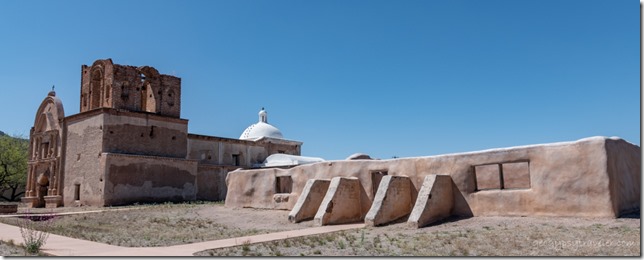 I learned much early Southwest history touring Tumacácori and struggled to pronounce the name, Tuma-cá-cori. Such an interesting place I visited over two days.
I learned much early Southwest history touring Tumacácori and struggled to pronounce the name, Tuma-cá-cori. Such an interesting place I visited over two days.
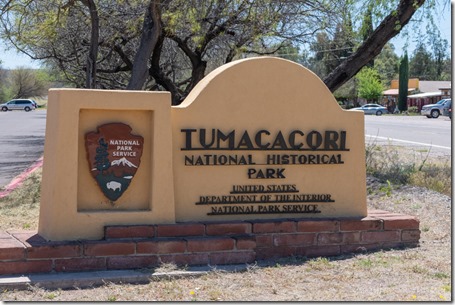 After nine days during mid-April boondocking along the High Gates Road in Buenos Aires National Wildlife Refuge I traveled east to visit some historic sites. Turned out Tubac Presidio State Historic Park appeared way to tourista surrounded my several blocks of what I call junk shops. I don’t need any more junk, so I left in a hurry and continued south to Tumacácori National Historical Park, a National Park Service site. Their parking lot isn’t made for oversized rigs, but it was mostly empty so I paralleled and took up several spaces far away from the entrance to the Visitor Center. Might find parking along the frontage road for a rig bigger than my 21 feet. I saw RV parks to the north in Amado but boondocked elsewhere.
After nine days during mid-April boondocking along the High Gates Road in Buenos Aires National Wildlife Refuge I traveled east to visit some historic sites. Turned out Tubac Presidio State Historic Park appeared way to tourista surrounded my several blocks of what I call junk shops. I don’t need any more junk, so I left in a hurry and continued south to Tumacácori National Historical Park, a National Park Service site. Their parking lot isn’t made for oversized rigs, but it was mostly empty so I paralleled and took up several spaces far away from the entrance to the Visitor Center. Might find parking along the frontage road for a rig bigger than my 21 feet. I saw RV parks to the north in Amado but boondocked elsewhere.
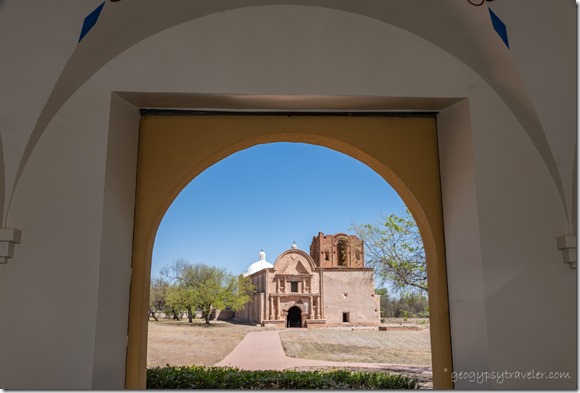 The Visitor Center built from 1935-37 of adobe and plaster by local workers including CCC (Civilian Conservation Corps), using “New Deal” project funds and oriented to provide an amazing view of the church. There are several superb CCC dioramas in the museum but under glass so couldn’t take pics.
The Visitor Center built from 1935-37 of adobe and plaster by local workers including CCC (Civilian Conservation Corps), using “New Deal” project funds and oriented to provide an amazing view of the church. There are several superb CCC dioramas in the museum but under glass so couldn’t take pics.
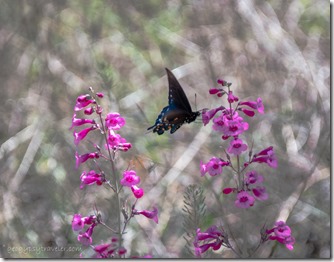 After picking up my Junior Ranger book and an overpriced Prickly Pear cactus candy treat I walked into the Courtyard Garden adjoining the center. I met volunteer Gary in the garden and was the only one on his 1pm tour of the Tumacácori church.
After picking up my Junior Ranger book and an overpriced Prickly Pear cactus candy treat I walked into the Courtyard Garden adjoining the center. I met volunteer Gary in the garden and was the only one on his 1pm tour of the Tumacácori church.
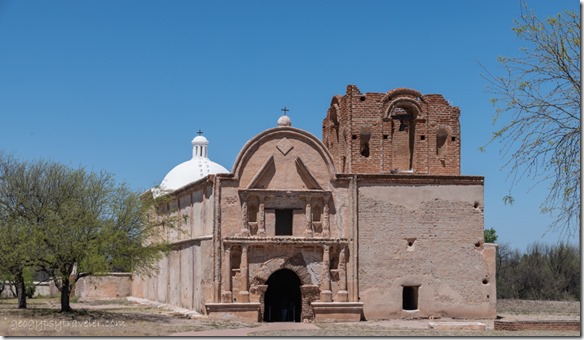 Completed in 1822 after almost 25 years of construction, the front of the church was originally brightly painted. The columns were red, the Egyptian-style capitals yellow with black markings, and the statue niches were blue.
Completed in 1822 after almost 25 years of construction, the front of the church was originally brightly painted. The columns were red, the Egyptian-style capitals yellow with black markings, and the statue niches were blue.
 The adjacent Bell Tower has scallop shell niches for Saint James the Apostle, patron of laborers.
The adjacent Bell Tower has scallop shell niches for Saint James the Apostle, patron of laborers.
Entering a long hall of the Nave, niches line the walls where statues of saints stood with candles below.
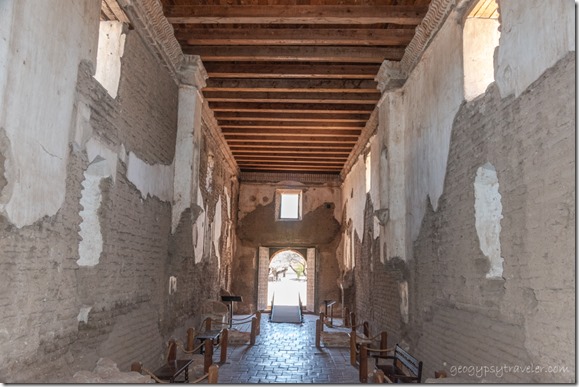 Immediately to the right of the door is a small room called the Baptistry and stairs leading to the bell tower and choir loft located directly above the door, but no longer there.
Immediately to the right of the door is a small room called the Baptistry and stairs leading to the bell tower and choir loft located directly above the door, but no longer there.
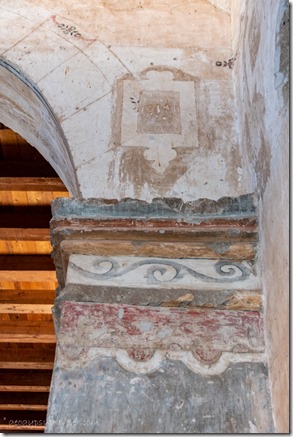 The opposite end of the hall is the Sanctuary with a domed ceiling made of strong fired adobe bricks. Most of the church’s vertical walls were made of the mud-adobe bricks then covered with plaster, etched and painted. After abandonment in 1848, the roof was removed and local settlers re-used the timbers.
The opposite end of the hall is the Sanctuary with a domed ceiling made of strong fired adobe bricks. Most of the church’s vertical walls were made of the mud-adobe bricks then covered with plaster, etched and painted. After abandonment in 1848, the roof was removed and local settlers re-used the timbers.
Built by the local people’s labor
The land and first people, we call the Tohono O’odam (pronounced AW-aw-tum), lived in the Santa Cruz river valley, wove baskets from wetland reeds, grew corn, beans, and squash, hunted rabbit and deer, gathered acorns, mesquite beans, cactus pads, buds and fruits.
In January 1691, Father Kino lead the first Europeans to an O’odam village and started Tumacácori Mission and community for teaching the native people the Spanish way of life, farming, religion, speaking Spanish, and how to build using mud bricks called adobe. Spaniards brought wheat, pork, beef, chicken, olives, peaches, pomegranates, figs, apricots and oranges.
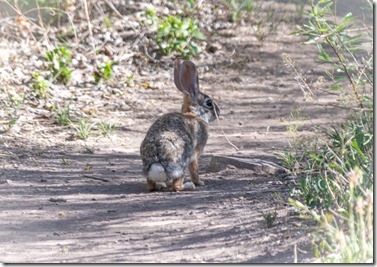 My next wander was into the orchard which was restored in 2007 after much searching of historic orchards for trees to take grafts and gather seeds. Species include quince, pomegranate, fig, apple, plum, apricot, peach, olive, and orange trees.
My next wander was into the orchard which was restored in 2007 after much searching of historic orchards for trees to take grafts and gather seeds. Species include quince, pomegranate, fig, apple, plum, apricot, peach, olive, and orange trees.
By this time it was later afternoon and I still needed to find a place to camp for the night, preferably nearby so I could return in the morning. I got my Junior Ranger badge and bought a hatpin.
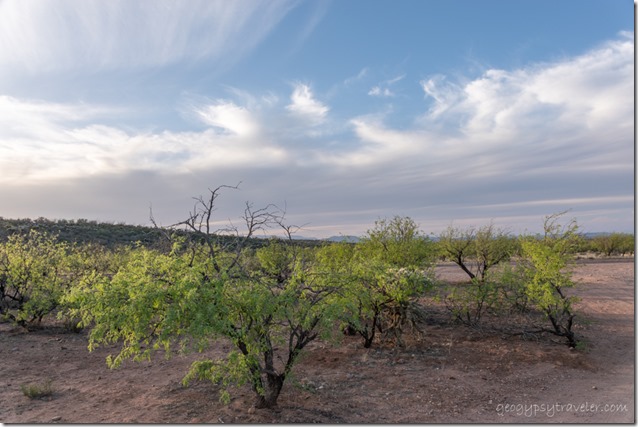 A Ranger gave me directions for a place that certainly wasn’t ideal but worked for a one-nighter. Yes, I could see but barely hear the traffic on Interstate 19 and was also in sight of a border patrol check point for northbound traffic. Safer there than further along a rough gravel road.
A Ranger gave me directions for a place that certainly wasn’t ideal but worked for a one-nighter. Yes, I could see but barely hear the traffic on Interstate 19 and was also in sight of a border patrol check point for northbound traffic. Safer there than further along a rough gravel road.
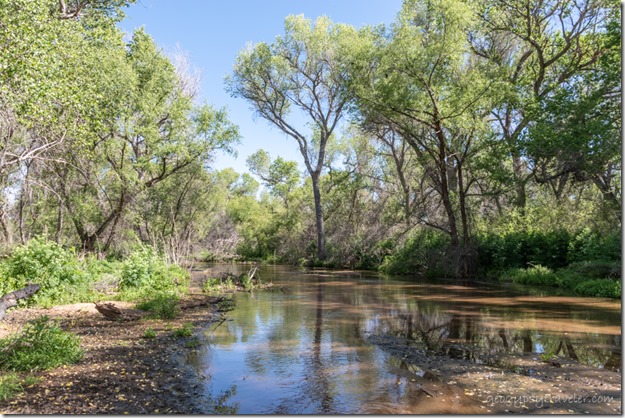 In the morning I returned before the visitor center was open but was allowed in and walked the 1/4 mile to the Santa Cruz River.
In the morning I returned before the visitor center was open but was allowed in and walked the 1/4 mile to the Santa Cruz River.
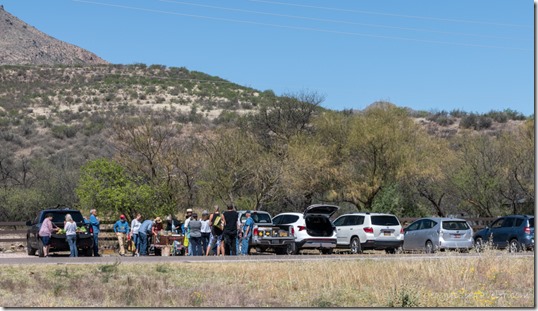 Returning to the parking lot I saw what looked like a farmers’ market across the street. Turned out to be a local food-bank and I was invited to help myself to some lovely produce.
Returning to the parking lot I saw what looked like a farmers’ market across the street. Turned out to be a local food-bank and I was invited to help myself to some lovely produce.
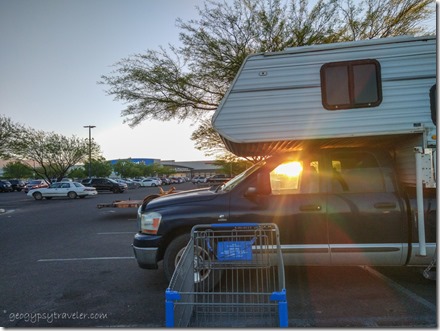 From there I headed to Sierra Vista for a Walmart night before my next destination to visit a friend in Bisbee.
From there I headed to Sierra Vista for a Walmart night before my next destination to visit a friend in Bisbee.

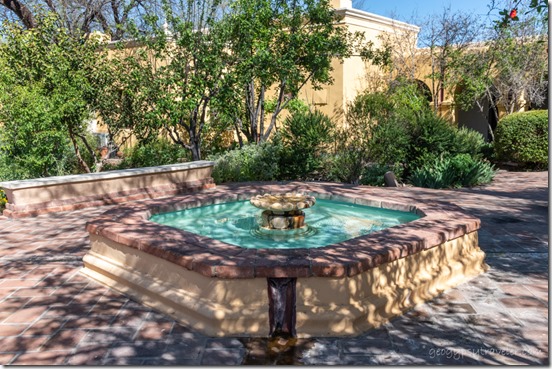
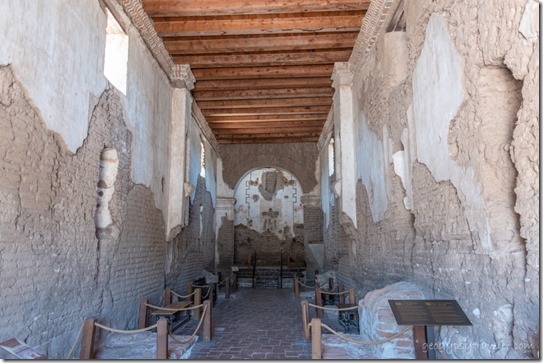
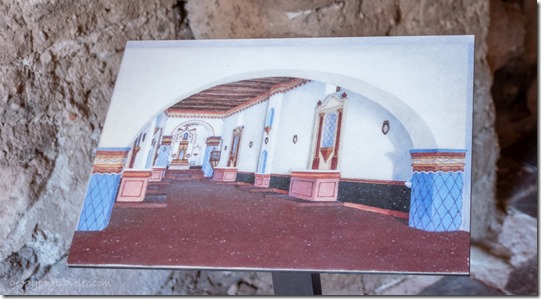
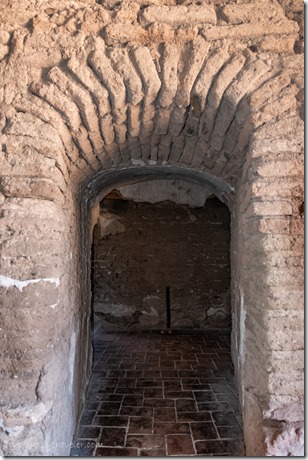
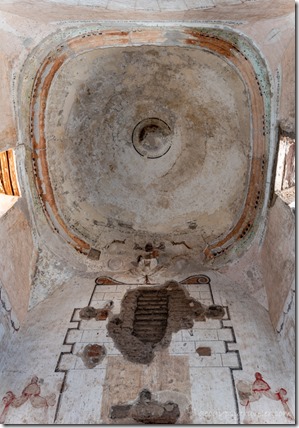
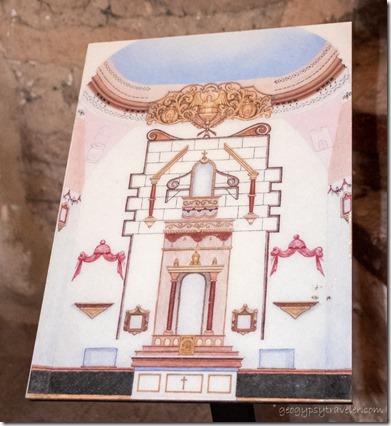
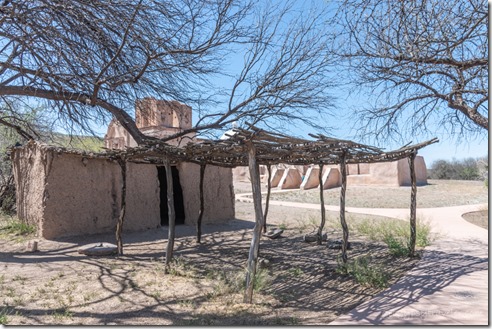

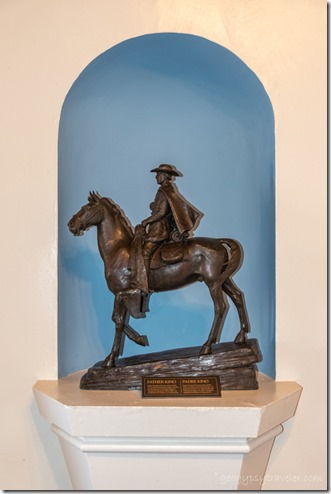
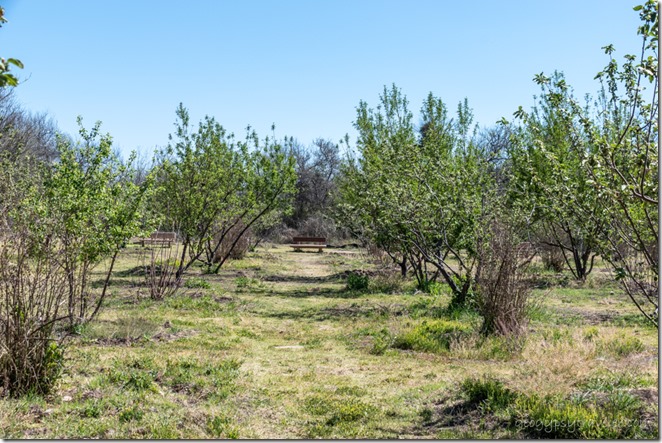
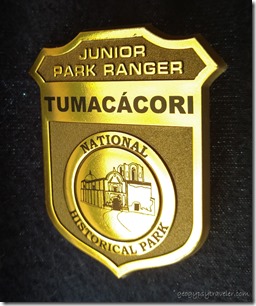

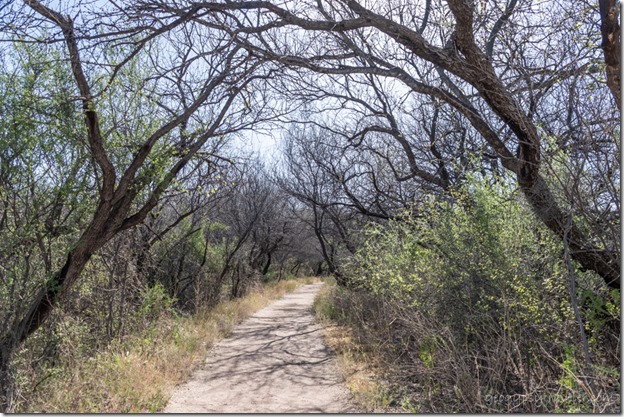
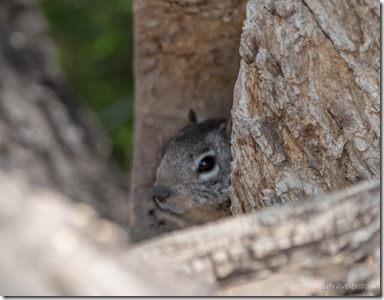
Thanks for the tour of a place I would possibly never know about without you. Wish it was still painted in those bright colors.
You’re welcome. Would be awesome to see the colors.
What a beautiful place to visit, love all the photo’s and explanations. Thanks for sharing. Enjoy your next trip and meeting your friend.
Thanks. So glad I got the volunteer’s tour.
You sure have adventures! Happy trails!
Thanks. So glad I got the volunteer’s tour.
Wow what an interesting post and thank so much for taking us along. A great virtual tour. Hugs Diane and Nigel
Thanks for coming along. Surely an interesting place.
I loved hearing about the orchards. I would need to return to see those and walk that nice path to river. I’d gone for the cactus candy too:) I just walked the Yarnell Daze up and down, lots of fun and goodies. More happy trails to you.
Tumacacori was a great place. Glad you enjoyed Yarnell Daze.
I’ve wondered about that national park, now I’ll have to check it out! Sorry you missed the amazing galleries and unique artisan shops in Tubac – and the excellent dining at Elvira’s. There’s some collectible junk in there too, but the art is wonderful.
Tubac did look like it had interesting art, but I’m not in the market. Tumacacori is definitely worth checking out.
Thanks for the tour! We have never been in the area and appreciate your essay on why we need to find a reson to be in the area.
I’m so glad I explored more of SE AZ and will definitely return.
One of those exotic place names around the world that one should collect in a life well lived. We visited in 1990 on our way into Mexico. In a matter of a few days, I went from the lush wet greenery of the Big Island to desert dry Arizona and Mexico. Only modern travel means can allow such diversity of environments and cultures in so short a time. So unfortunate it is so environmentally damaging.
I doubt Tumacacori has changed much since your visit.
Tumacacori had only been open a few months before our visit. No Hat pins or Junior Ranger badges. I think we did collect a sticker, but it would be on our old Truck camper long since gone.
Would probably visit Tumacacori again if in the area, especially since I can now do it for free with my well used almost worn out pass. The most amazing site I have visit in Arizona is still Walnut Canyon National Monument. In New Mexico, it still has to be Pecos National Historical Park and Acoma Pueblo. All are on my will visit again list.